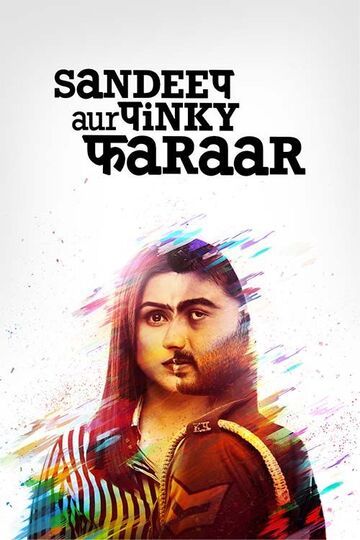
Since time immemorial, women have been seen playing the role of damsel in distress in Bollywood films. And men, their knight in shining armour. This was the set formula which films followed. Women were used as mere props at times, or to add to the ‘glamour quotient.’ Such objectification was nothing but a reflection of our society’s patriarchal mindset.
But things gradually began to change, and for good.
Films having a strong female character, often tagged frivolously as ‘women centric’ – changed the landscape of the film industry. No, it isn’t a new trend. Movies in the 70s (for instance, Mahesh Bhatt’s Arth) had such themes too. Queen, Kahaani, Pink, Dear Zindagi, NH10, Mardaani – these films, among many more, further enhanced this.
What’s gaining prominence, however, is how Bollywood films have been taking down patriarchy – and depicting toxic masculinity, breaking taboos and gender norms.
The latest to join the bandwagon is Sandeep aur Pinky Faraar. Directed by Dibakar Banerjee, starring Parineeti Chopra and Arjun Kapoor – the film was initially released in March this year. But unfortunately, owing to the second wave hitting India, cinema halls shut down yet again.
Now, when the film had its OTT premiere (released on Amazon Prime Video) this month, it’s then that it got its due. Though, it appears to be a on-the-run thriller or drama, or might even appear as a romance (as the Ishaaqzade pair is seen after long on-screen) – but it’s far from these.
Sandeep aur Pinky Faraar delves into the deep-rooted patriarchy, and the prevailing toxic masculinity in our society. It does so, but in a subtle manner. The small anecdotes – from the names of the protagonists (Kapoor is Pinky, and Chopra is Sandeep) to the depiction of how gender roles or norms play a huge role in our country – everything speaks volume.
Another film which recently explored the same theme is Sanya Malhotra starrer Pagglait. It is an ode to feminism and a bold take on patriarchy. The film, which has a funeral as its background setting – uses humour and satire to take on the issue of how women are treated in our society.
“Jab ladki log ko akal aati hai na, toh sab unhe pagglait hi kehte hain (When women start making sense, then the world calls her crazy), says the protagonist (played by Malhotra) at one point in this Umesh Bist directorial film. She speaks for all the women who stand for themselves, much to the chagrin of the society.
Rajkummar Rao and Jhanvi Kapoor starrer Roohi, which was the first film to get a theatrical release after the first wave ended, also explores a similar theme. The film, directed by Hardik Mehta, is a horror-comedy which uses satire to tell a feminist tale.
Here, a chudail (witch) – which is a representation of a woman’s self that is strong, powerful and independent – thus, appears threatening to the society, especially some of the men. And the one this chudail possesses, is the woman who depicts the one who is the product of what the society conditions her to become. (Spoilers ahead).
The climax, or the last scene of Roohi – where she chooses to embrace her inner “chudail” and rejects her two suitors, taking off alone on a bike – is an empowering scene that is rare in Bollywood.
Last year, Anvita Dutt’s Bullbul created a stir for telling a strong story of patriarchy and its brutality. Many termed the film as a feminist fairytale. Starring Tripti Dimri, Avinash Tiwari, Rahul Bose, among others – the film also (like Roohi) had a chudail. This one, unlike in Roohi, was created – or man-made.
This metaphor of a chudail in Bullbul signified the women who have been wronged in our society. When these women, the victims of chauvinism, and toxic masculinity and patriarchy – instead of giving themselves in, rise up from the ashes – it’s then that the society sees themselves as a demon. Yet, some others – who own a liberal mindset and are free from the clutches of orthodox mindset – worships such women as devi. And that’s what the film shows – how those fighting the patriarchal vendetta are often labelled as a witch.
These films might be fewer in number, compared to the ones which still show women as props or objects. But nevertheless, these films are the beginnings of a far more liberal, empowering and non-conforming film industry – which smashes patriarchy right in the face!
(Cover: Credit – IMDB)
Delhi Police raided a late-night illegal bar in Samaypur Badli, detaining 25 people and seizing…
A rear-end crash near Delhi Haat triggered a blaze that gutted both vehicles, though no…
Court grants probe agency more time as NIA pursues wider links in Red Fort blast…
Featuring works in thread, fabric, performance and digital media, Ski(e)n examines the body as a…
Govt report shows gains in maternal health, with better care access and fewer anaemia cases…
Delhi driver murdered after petty dispute; birthday celebration turns violent, say police